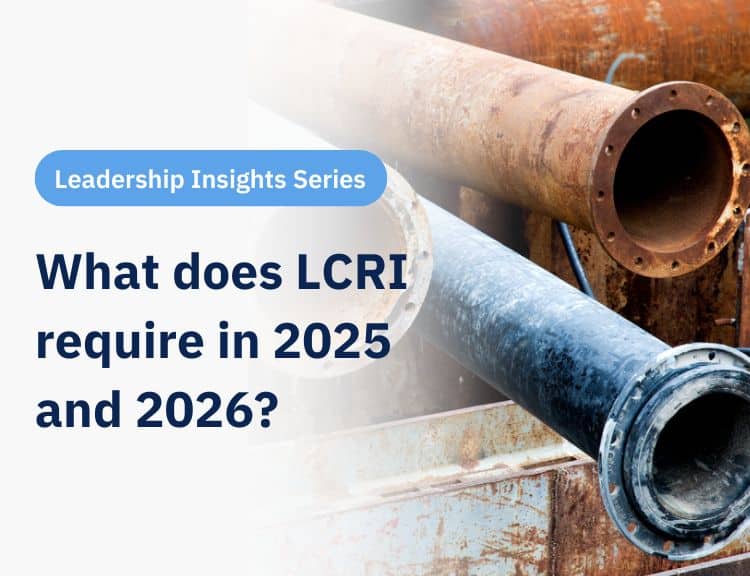Water systems with historically low or no levels of lead may think they’re in the clear when it comes to LCRI compliance – after all, they don’t have many (or any) pipes to replace. But if there are any lines of unknown material, they must be presumed lead until classified otherwise. That pushes classifying and managing those unknowns to the top of the to-do list. In this post, we break down how one city, Goshen, Ind., handled their unknown SL’s using BlueConduit and their results.
First, some quick background on the city:
- Population: 35,000
- Total SL’s: 12,000
- No known instances of LSLs in existing tap card records, but instances of galvanized service lines
As Goshen worked on classifying its service lines through home analysis, field verifications and resident outreach programs, it continued to find an absence of lead. By the time the city had exhausted its existing verification methods available, it had:
- Visually verified 4,600 lines, or about 40% of its system, on the private side
- Classified about 70% of the private-side lines through existing records and home age analysis, leaving 3,500 lines of unknown status
- Visually verified 270 lines on the utility-owned side
- Classified about 60% of the utility-owned lines based on records and home age, leaving about 4,700 unknowns
- Time spent on identification: About 15 months
With this information in hand, the city faced two options: It could make a plan for vacuum excavating every single one of its remaining unknown lines at a cost of nearly $3 million, or use statistical analysis for inventory classification. Goshen chose to move forward with a statistical analysis approach.
But what does using a statistical analysis approach to material classification actually mean? To start, BlueConduit recommends water systems use their existing records data to create a representative sample of lines for utilities to physically verify for the model. Then, for systems with low lead or no lead, generally BlueConduit’s No Lead Validation solution is employed, which uses scientific best-practice methods to demonstrate the low occurrence of lead service lines across the entire system with 95% confidence. This approach allows water systems to meet EPA and any state compliance requirements for their Service Line Inventory.
Utilizing this statistical approach, the City found that based on the size of its system and number of verifications, the probability that each service line was lead (at this stage in the inventory development) was no more than:
- 0.45% on the utility side
- 0.05% on the customer side
In selecting BlueConduit’s No Lead Validation solution, Goshen was able to:
- Successfully classify its entire system as non-lead using statistical analysis, resulting in 0 remaining unknown SL’s
- Achieve a cost savings of nearly 90%
- Successfully convince state regulators that any galvanized lines were never downstream of a lead service line and thus did not meet the EPA’s definition of galvanized-requiring-replacement (GRR)
- Spend under 12 months completing the work
For water systems with low or no levels of lead, managing any remaining unknown service lines in the inventory is critical to reduce the burden for compliance and any potential customer unease as a result of communication regarding their unknown lines. Using statistical methods is a cost-effective, efficient way to reduce those unknowns and meet LCRI compliance.
BlueConduit can help you with the next steps of LCRI compliance by using scientifically backed methods for effective unknown management and replacement planning where necessary. Contact us to learn more.





